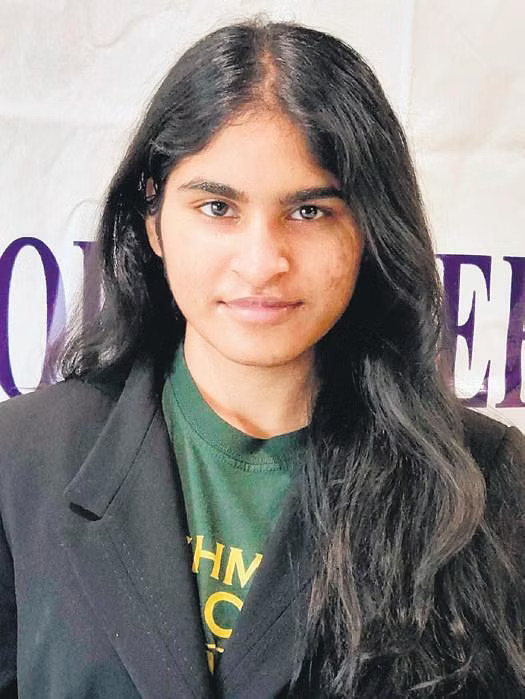(November 8, 2023) Monika Chandolu, a resident of Movva village in Krishna district in Vijayawada, got an impressive 95.4 percent in her 12th grade and qualified for the JEE Mains exam. She is confident of clearing her JEE advanced test and getting admission into a top institute. This wouldn’t have been possible without the help of 16-year-old Greeshma Davu, an Indian American living in the suburb of Washington DC, who is helping many deserving students like Monika by providing financial assistance for their education.
Greeshma is on a mission to empower underprivileged girls and is doing everything possible to help the girls get the right access to education, and it’s her parents who are helping her in the process. She is assisting Monika in her pursuit of engineering education using Tata’s Palleseva organization, which is located in Kaza village within the same mandal.

Greeshma Davu
“During a visit to my grandparent’s hometown in India, I have learned about the dire consequences of inadequate education. Witnessing the lack of access to basic rights for women, I became motivated to make a difference through charity,” she told a daily.
While her parents have been the wind beneath her wings, she has been working hard to provide financial help to girls like Monika by working at Kumon learning centers, as well as working as an intern at the University of Virginia Neuro Science Lab. The concept of aiding the underprivileged by offering education took shape during her visit to India, where she saw distressing situations in which women encountered hardships because of their limited access to education.
In addition to her commitment to academics and sports, the teenager is also actively involved in charitable work through her non-profit organization, ‘Care 4 Needy,’ which extends its assistance to both Indian and American communities. ‘Care 4 Needy’ was founded in January 2022, with the initiative stemming from the vision of Greeshma’s mother and founder, Srilatha Tata, along with her maternal uncle, Pavan Kumar Tata. Greeshma and her uncle, Anil Kumar Tata, serve as co-founders of the organisation.


This dual-pronged dedication to education and community service exemplifies their family’s commitment to making a positive impact both locally and abroad through ‘Care 4 Needy.’
Apart from charitable work, Greeshma has demonstrated her academic prowess by achieving the sixth position in the State Technology Student Association (TSA) conference, showcasing her excellence in this field. Simultaneously, she is passionate about sports and has earned a spot on the Junior Varsity Volleyball team at Rockridge High School, her former educational institution.
Furthermore, Greeshma is not only excelling in her studies and sports but also showing her commitment to social causes. Her goal is to provide sanitary napkins to women and teenagers in rural areas, and she has already managed to raise an impressive $20,000 in funds to support this vital cause. Her dedication to both academic and humanitarian pursuits is truly inspiring.
“Working at the National Institute of Health to support those suffering from lupus disease, Greeshma achieved recognition in the State Technology Student Association. With the guidance of her mentors Ravi Davu and Dr Prakash Bethapudi, she also published research on brain tumour identification,” Greeshma’s mother added.




